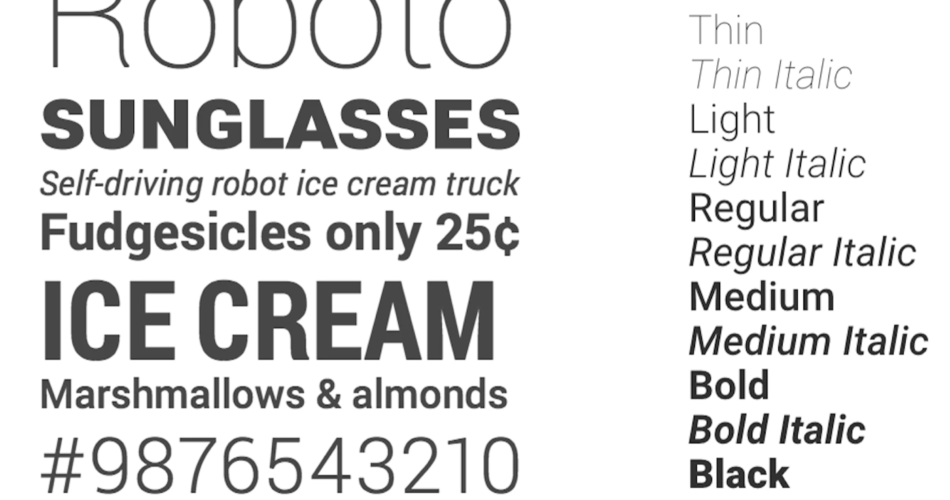Typography has long been a fundamental component of design, branding, and communication. From the earliest handwritten manuscripts to the digital age, fonts have played a crucial role in conveying information, mood, and style. In recent years, a significant breakthrough in the world of typography has emerged – variable fonts. These innovative typefaces have revolutionized the way we think about fonts and offer unprecedented flexibility and adaptability in design and web development.
In this in-depth article, we will explore the concept of variable fonts, their history, technical aspects, advantages, and their profound impact on various design fields, user experience, and the future of typography.
Chapter 1: The Genesis of Variable Fonts
1.1. The Need for Flexibility
Typography has always been about achieving balance between legibility and aesthetics. In the digital age, this balance became more challenging as devices and screens varied greatly in size, resolution, and capabilities. Designers and developers needed fonts that could adapt seamlessly to different environments without sacrificing style or readability.
1.2. The Birth of Variable Fonts
Variable fonts emerged as a response to this need for flexibility. The concept was introduced by Adobe, Apple, Google, and Microsoft in 2016 as an extension of the OpenType font format. This collaborative effort aimed to create fonts that could encompass a range of styles within a single file, thus reducing the need for multiple font files to support various weights, widths, and styles.
Chapter 2: Anatomy of Variable Fonts
2.1. Axes of Variation
Variable fonts are built on the idea of axes of variation, which define the design attributes that can be adjusted. These axes can include weight, width, slant, and more. Designers can interpolate between these axes to create a virtually infinite range of font styles, making them highly customizable.
2.2. Compression and Decompression
parametric fonts use compression to store multiple styles within a single file efficiently. When a specific style is needed, the font is decompressed and rendered on-the-fly, resulting in faster loading times and reduced bandwidth usage compared to traditional fonts.
Chapter 3: Advantages of Variable Fonts
3.1. Improved Web Performance
Variable fonts are a game-changer for web design. They reduce the number of HTTP requests and file sizes, resulting in faster loading websites and improved user experience. This is especially crucial in an era where speed and accessibility are paramount.
3.2. Enhanced Design Freedom
Designers now have greater creative freedom. Variable fonts allow for real-time adjustments, making it easier to fine-tune typography to fit specific design requirements. This flexibility has a profound impact on branding, as fonts can adapt seamlessly across different mediums and devices.
3.3. Accessibility and Responsiveness
Parametric fonts promote accessibility by offering a wider range of styles. This ensures that content remains readable for individuals with visual impairments or on various devices, from large desktop screens to small mobile displays.
Chapter 4: Variable Fonts in Practice
4.1. Web Design
Web designers have eagerly embraced variable fonts for responsive web design. They can now optimize typography across different breakpoints and device orientations, enhancing the overall user experience.
4.2. Branding and Identity
Variable fonts have redefined branding and identity design. Brands can maintain a consistent typographic identity across print, digital, and multimedia platforms, creating a stronger and more recognizable presence.
4.3. User Interfaces (UI)
Variable fonts are increasingly used in user interfaces to provide dynamic and adaptable typography. UI elements can scale gracefully, improving usability and aesthetics.
Chapter 5: The Future of Typography
The adoption of variable fonts is still in its infancy, but the potential is vast. As technology continues to evolve, parametric fonts will likely become more prevalent and sophisticated. Some future developments to watch for include:
5.1. Expanded Axis of Variation
Designers may gain access to even more axes of variation, enabling finer control over font attributes, such as serifs, x-height, and letter spacing.
5.2. AI-Driven Typography
Artificial intelligence could play a role in generating custom parametric fonts based on design preferences and content, opening up new possibilities for personalized typography.
5.3. Integration with AR and VR
parametric fonts could enhance the typography in augmented and virtual reality environments, creating immersive and adaptive reading experiences.
Conclusion
Variable fonts are a revolutionary advancement in typography that has reshaped design, web development, and user experience. Their flexibility, efficiency, and adaptability have made them a valuable tool for designers, brand managers, and developers alike. As the technology continues to evolve and become more accessible, we can expect to see even more exciting developments in the world of different fonts, pushing the boundaries of typographic expression and communication. This typographic revolution is far from over, and the future promises to be an exciting journey for font enthusiasts and designers alike.

